Welcome to a new iteration of my Nature Notes blog, An Ecology of Love and Ruin. The name comes from a chapter in my first book On Gallows Down and I hope will steer and guide my intention: to write, mostly from home, where I have written for more than twenty years about loving nature and the land, charting its joys and ruin and trying, where I can, to turn that into positivity and actions. I love that the word ecology, the relationships and connection between living things and their environment, comes from the Greek oikos (oekologie) for the home place – if not the scientist who coined the name. Among other things, he was a eugenicist.
I’ll be posting once a month here, and also on Substack, occasionally revisiting some of my archives. I hope you’ll enjoy, subscribe, engage, or just pop in when you fancy…
The Walker
Heat is beating off the twin lines of hard-pressed chalk, that score the spine of the downs, either side of its hot grassy middle. As the chalk dries in this droughty, heatwavey late spring, the flints come loose like vertebrae, rattling under my boots. There is little shade up here, and nobody for miles. But then I saw The Walker. My sometime, broad-hatted and distant companion, whose floppy hat brim bounces as he walks.
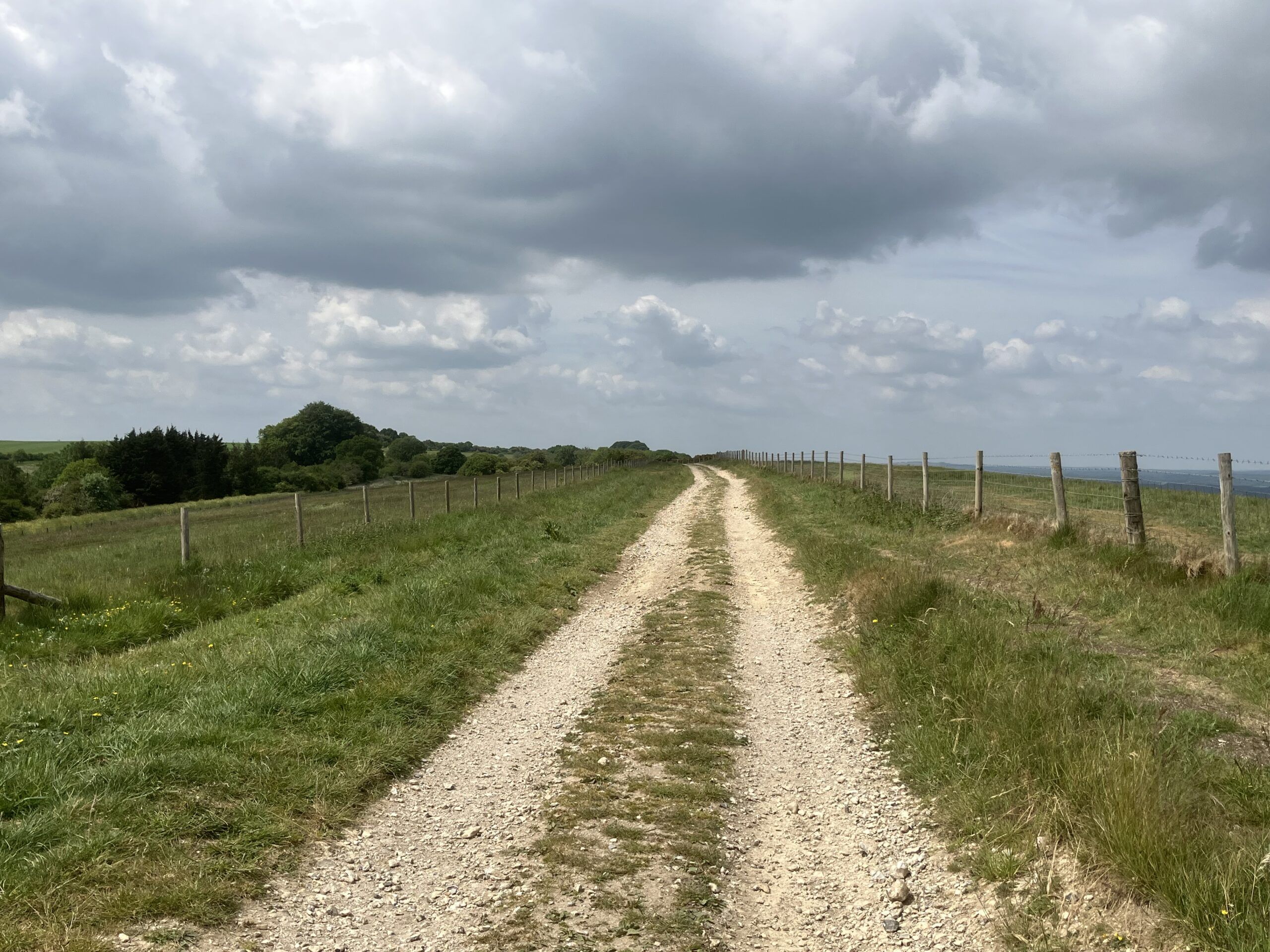
I haven’t seen him in a long while. Encounters are faintly puzzling and strange, dreamlike and on repeat, though months or years apart. They are usually realised on reflection; that his walking is somehow impossible. Solid and real, with that ‘country’ walk that covers distance at an easy pace whatever the terrain, but if he appears way ahead, he might then appear behind, some time later. Or on another hill, unfeasibly distant like an overlay, or something glitching. Sometimes we pass each other and he’ll speak or nod, not stopping. I can’t picture or remember his features. He’s never threatening. Just… walking. I only recognised him today, when he wasn’t there.
I’d spotted someone coming towards me, hat brim bouncing to a long stride. As he got nearer, I called my dog to me and looked up to say ‘good afternoon’ as he rounded a hawthorn bush. Only he didn’t. That’s when I knew it was him. The track and hill all around were empty, but for the skylarks, yellowhammers and meadow pipits. As I walked and twirled slow 360’s in the heat, I tried to make sense of his thereness, and then not being there at all. There was nowhere he could have gone. There was just the open down, the track, birds and scattered butterflies, pockets of a heat haze wobble. Perhaps that was it; that sometimes, the heat, atmospherics and weather, the strangeness of scale up here, the stretch of a long road (the lungo drom in Romani) plays with perception.
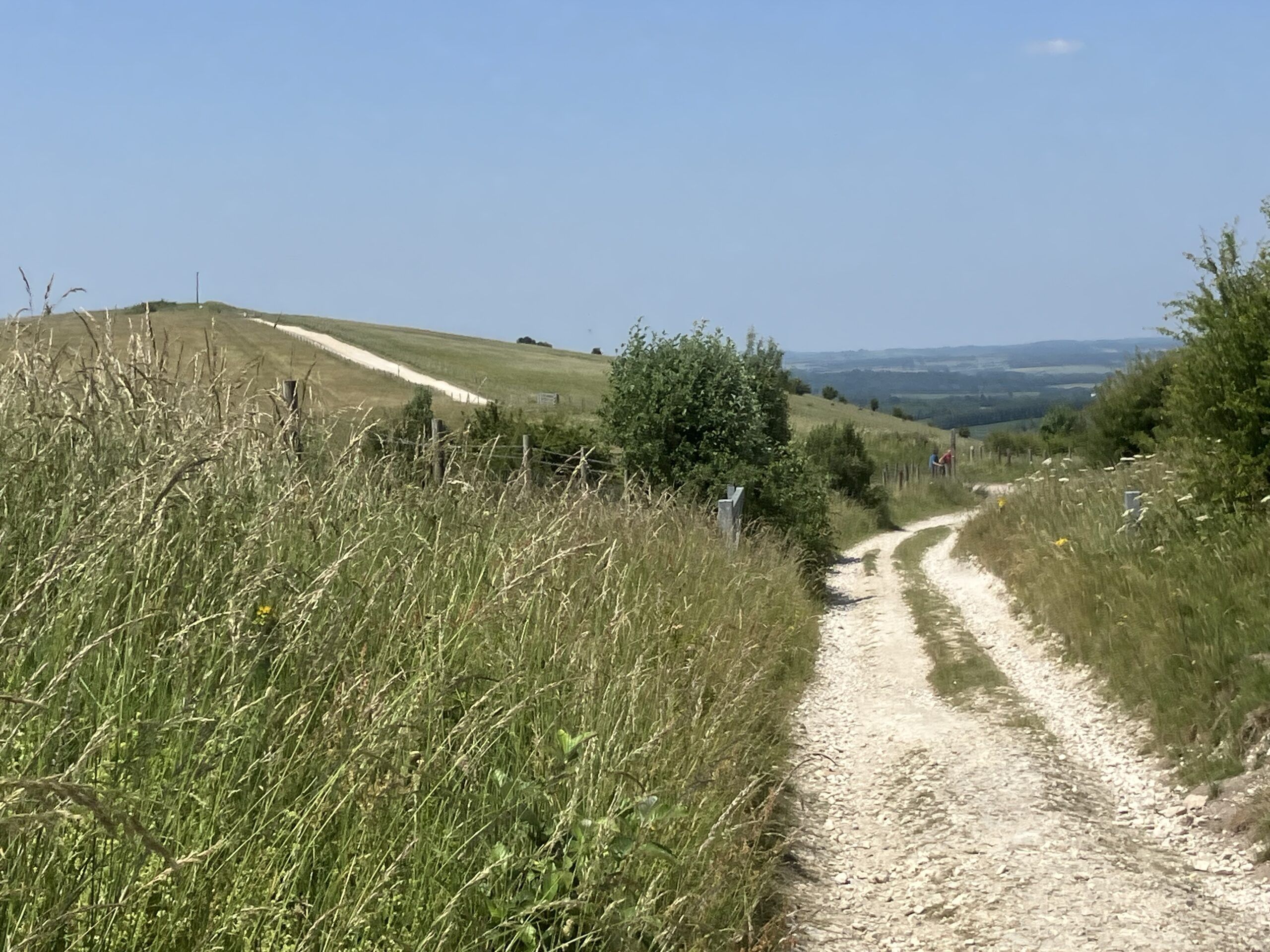
The track is fenced and leads the eye up to the crown of the hill, where the gallows stands on top of its long barrow, like an inverted mast on an upturned boat. There are glossy ravens, and two sit on adjacent fence posts in opposing directions, north and south. As I walk, the fence posts align into one, pencil-toppered by the birds, whose tails stick out from their merged heads. Like a flop-brimmed hat, perhaps. But they came no closer, and he did. I saw buttons; a shirt slightly open and a neckerchief, knotted.
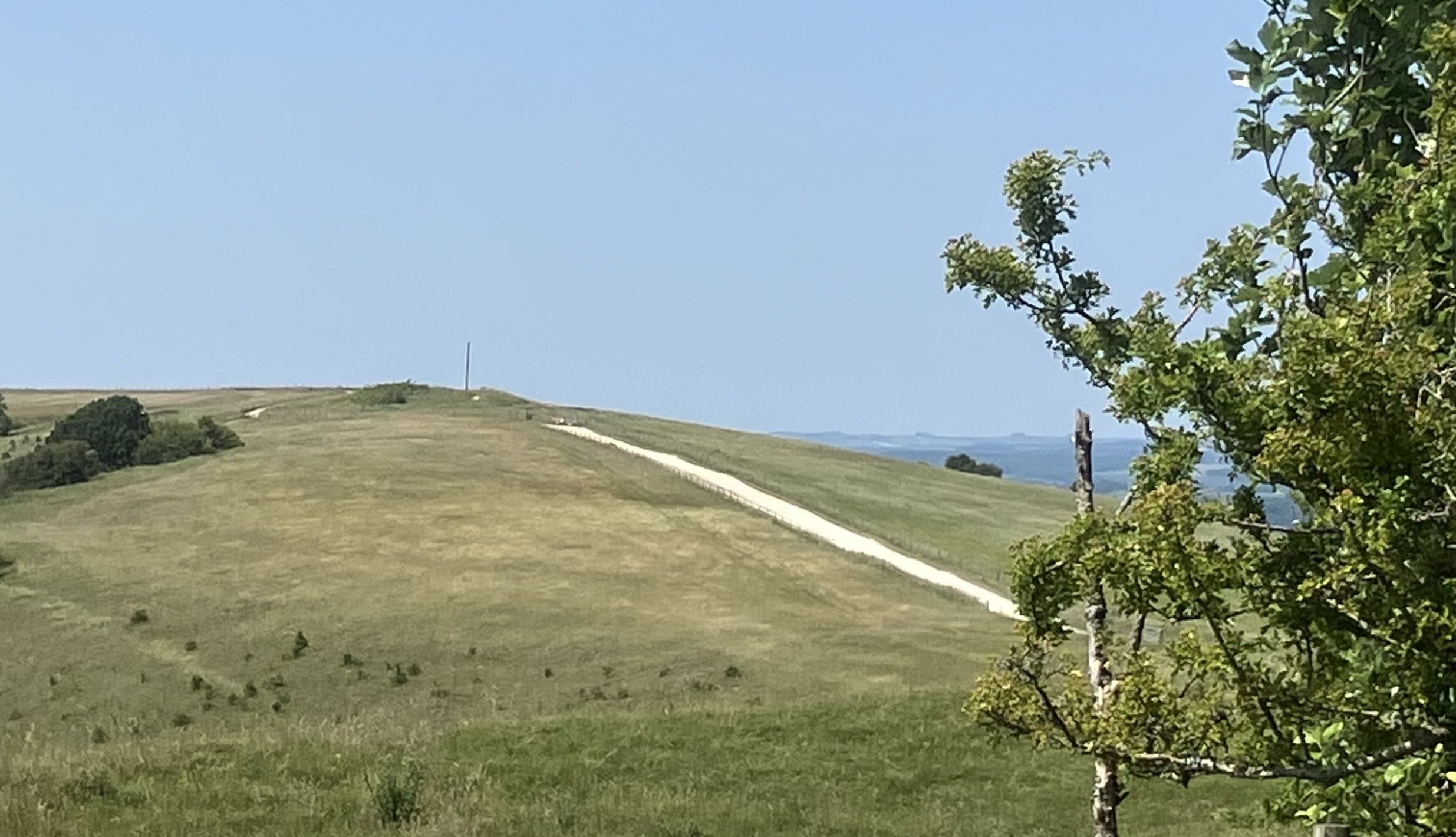
There is a precedence. A character that pops up in literature through the ages, part of our ‘parramisha’ (our story) of stories. Just off the top of my head, I think of John Clare’s Wisdom Smith, Matthew Arnold’s Scholar Gipsy, the walker in those edgy and haunting pony books by Patricia Leitch; in Susan Cooper’s The Dark is Rising, in so much by Alan Garner, and in Melissa Harrison’s At Hawthorn Time. Sometimes, I don’t recognise him because I am not being aware or questioning enough, and sometimes I think it is because he is not the ghost I think I’m looking for. If that’s what he is. I think he’s something inbetween.
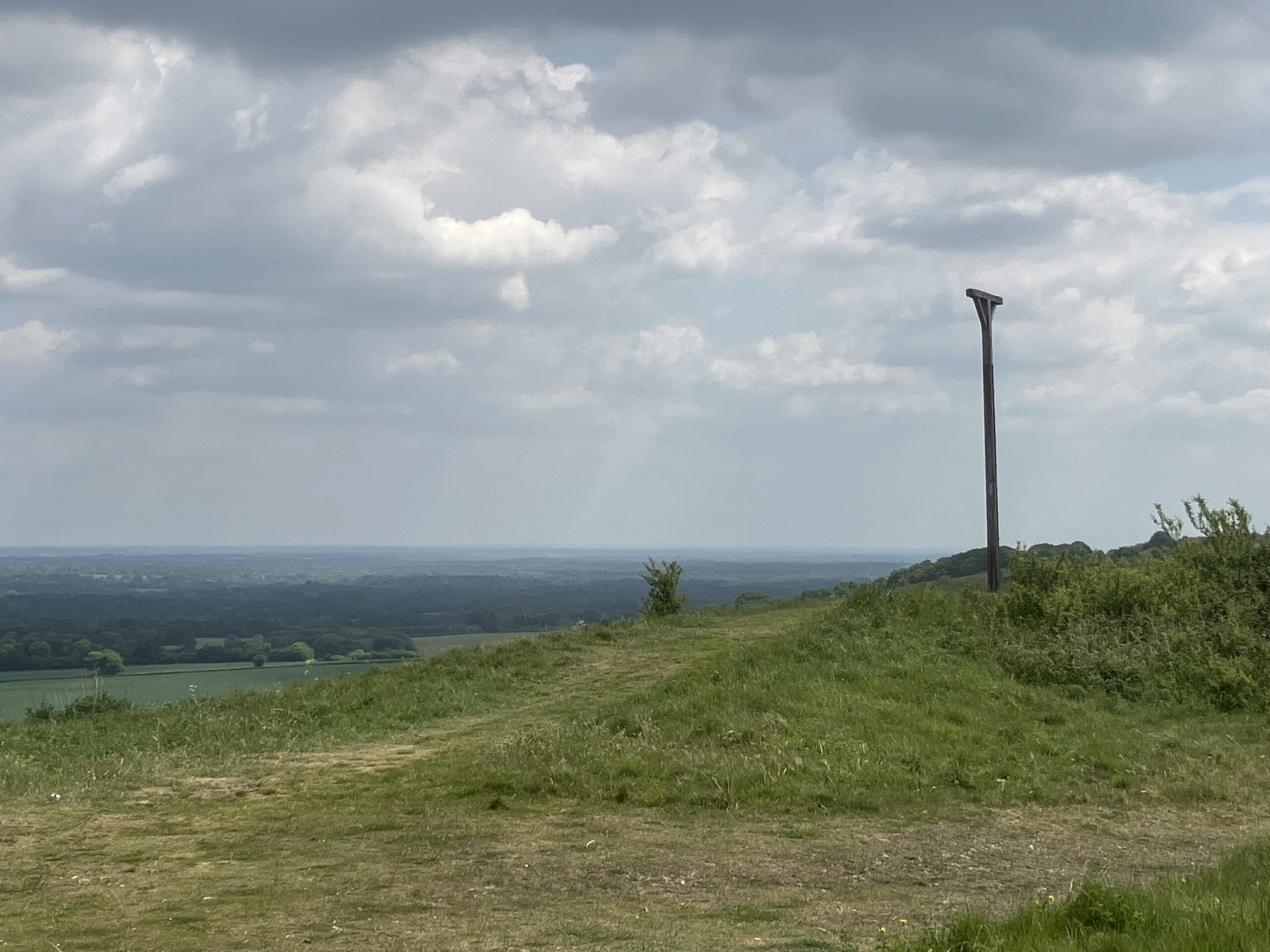
It’s hard to be spooked on a high, bright, open and familiar downland in the middle of the day, but I was baffled. I didn’t see him again. I find it hard to accept he isn’t … real. I’d been absorbed in the sad state of the downland that gets to me often. It struck me that the real ghost was the hill I was walking over – and that he only ever does (I’ve seen him on different hills, but always chalk ones.) Despite management now taking place, which is only really intensive sheep grazing from about September to March, it’s not enough. There aren’t enough sheep to graze the hill hard in winter, and they are also fed hay. Attempts have been made to mow the tops of the hill, but the heating, enriching sward is left on. Enriched further by agricultural runoff from arable fields, nettles, thistles, hogweed and coarse grasses are crowding out the flowers, rainforest rare and with their important ecosystems to so many insects and birds.
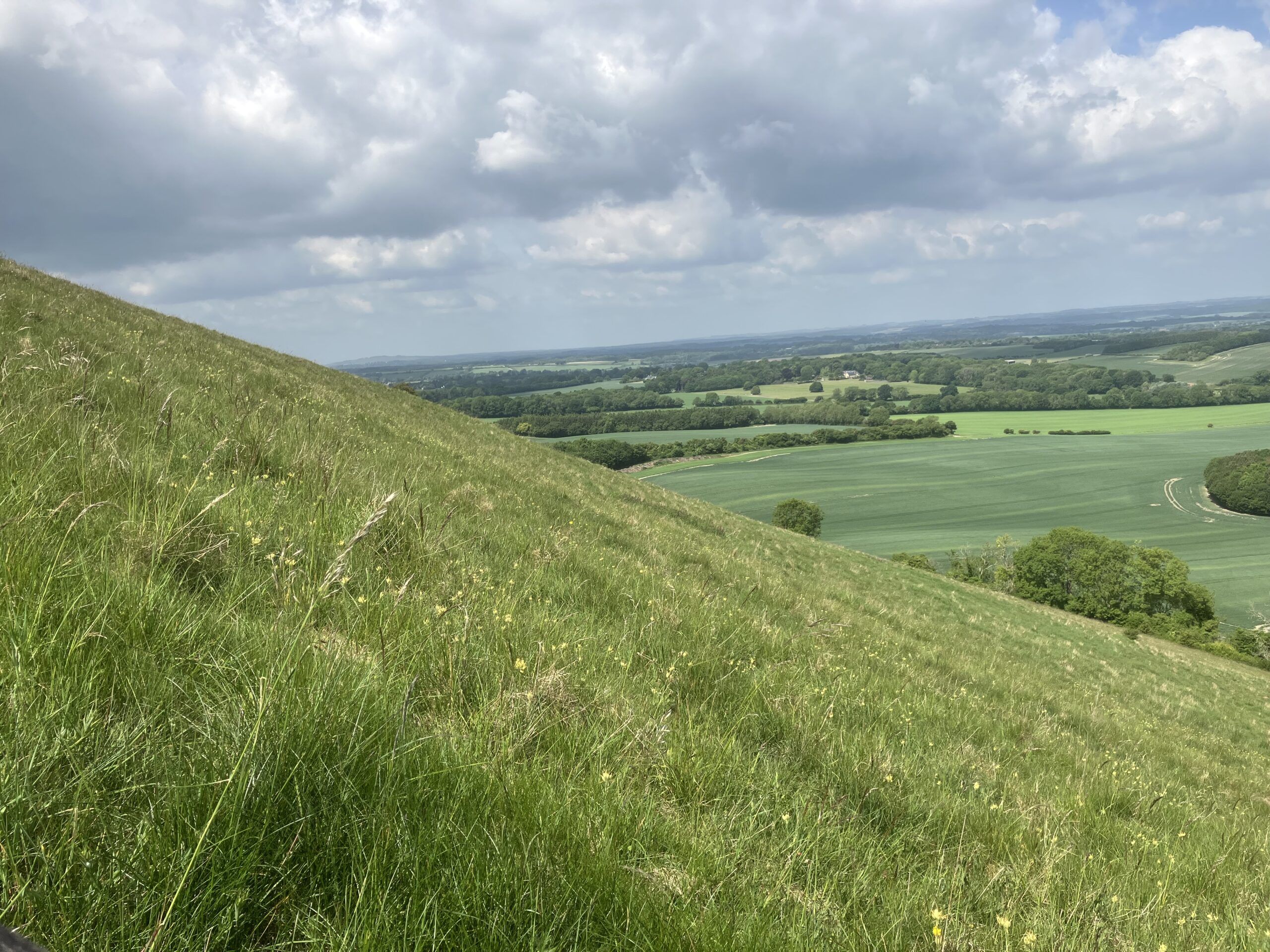
It looks fine – it’s a green hill with fantastic views and there are skylarks singing; isn’t it beautiful? But in reality, it’s missing most of itself – its myriad, connective, diversity and richness borne of 1,000s of years of grazing. It’s much as if an intricate, hand-embroidered, exquisitely detailed quilt has been replaced with a cheap, bland, mass-produced alternative, using just three colours. Local ecologist and Reading University lecturer, Chris Foster, replied to my lament on Bluesky in empathy (these downs represent 95% of the chalk grassland in Berkshire, and have so much potential.) He encouraged me that ‘chalk grassland recovery has the potential to be much more rapid than e.g. ancient woodland.’ I’ve seen this place so much better, brighter and vibrant even as little as five years ago. Do I try engaging and moving the landowner to a sustained effort, again, where I’ve failed before, many times? What support would they need, now? Perhaps the next time I see my walker I’ll ask him what he remembers of the downland. Risk a wave across the hill.
Leave a comment